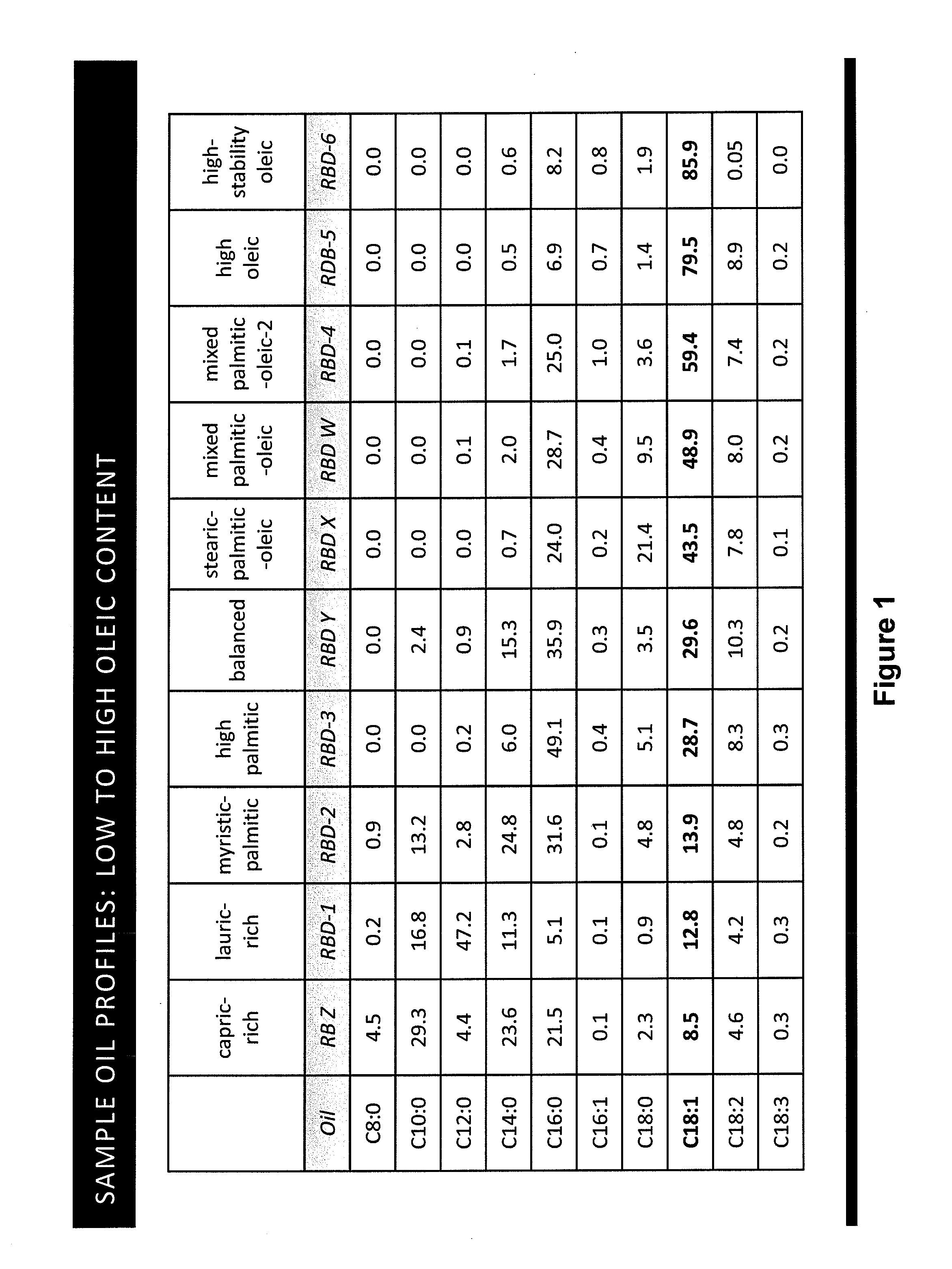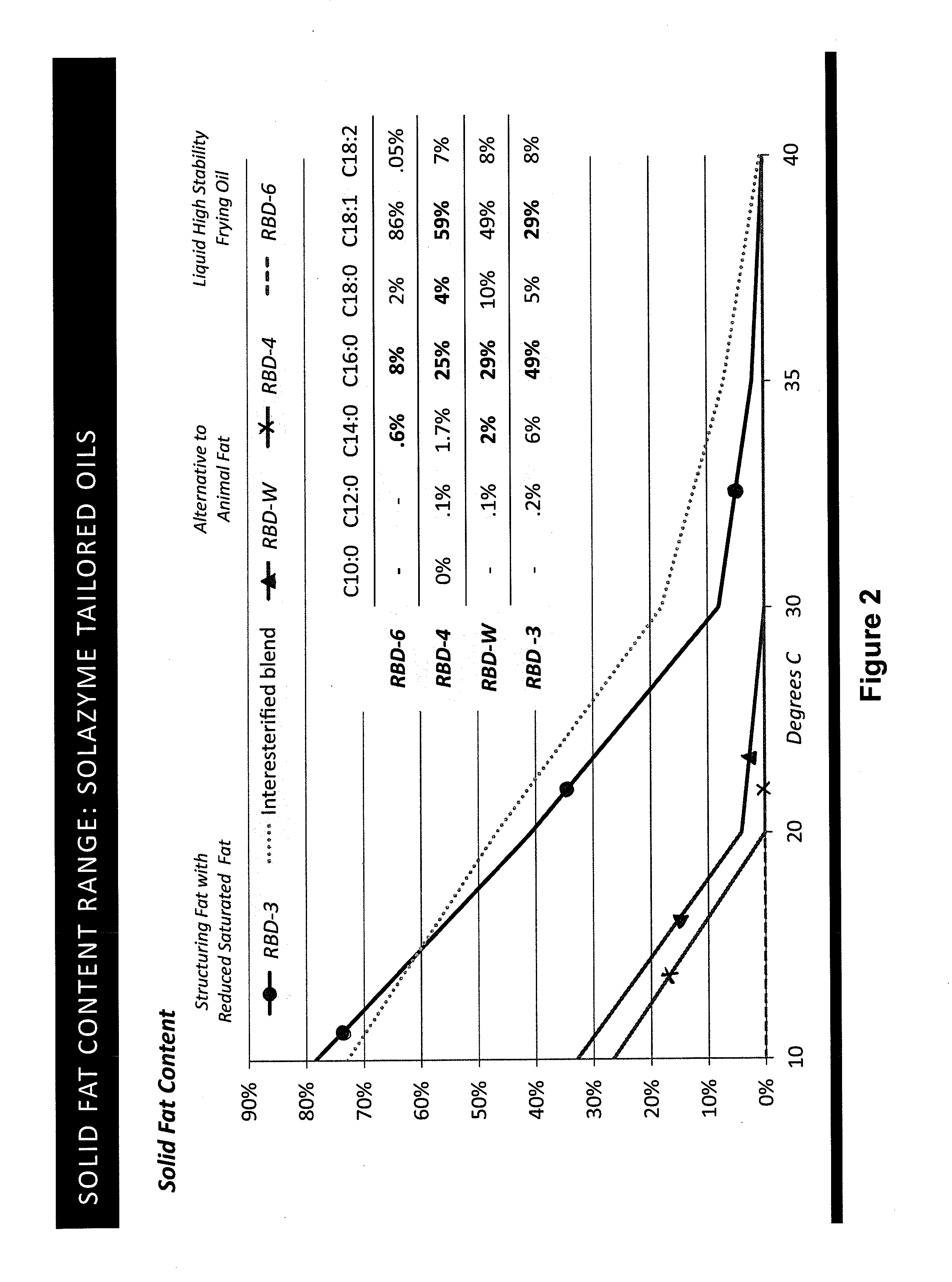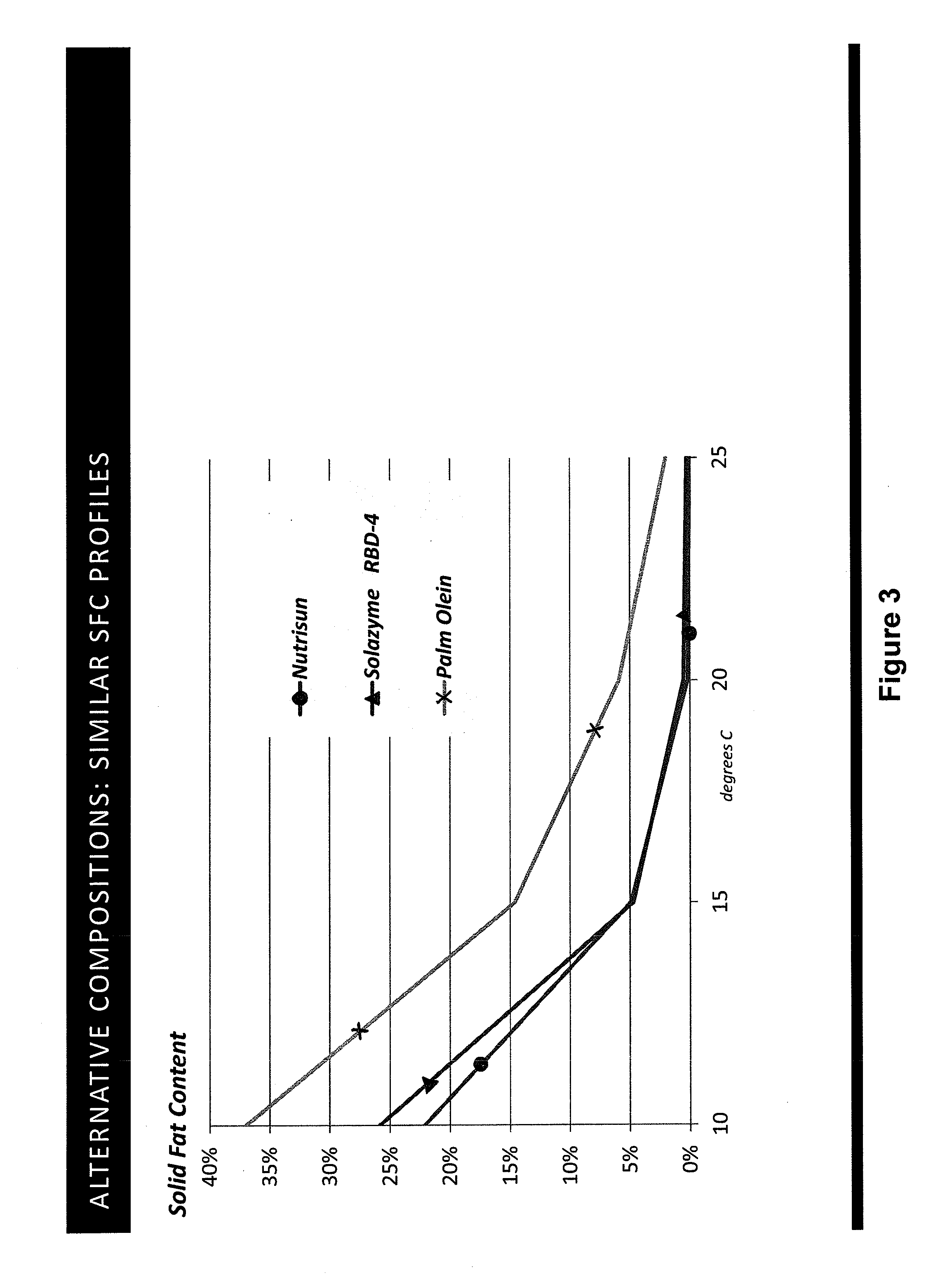Tailored Oils
a technology of oleochemicals and oils, applied in the field of oils/fats, fuels, foods, and oleochemicals, can solve the problems of cell division inhibition, and achieve the effects of reducing the activity of an endogenous acyl-acp thioesterase, and increasing the proportion of long chain fatty acids
- Summary
- Abstract
- Description
- Claims
- Application Information
AI Technical Summary
Benefits of technology
Problems solved by technology
Method used
Image
Examples
example 1
Fatty Acid Analysis by Fatty Acid Methyl Ester Detection
[0257]Lipid samples were prepared from dried biomass. 20-40 mg of dried biomass was resuspended in 2 mL of 5% H2SO4 in MeOH, and 200 ul of toluene containing an appropriate amount of a suitable internal standard (C19:0) was added. The mixture was sonicated briefly to disperse the biomass, then heated at 70-75° C. for 3.5 hours. 2 mL of heptane was added to extract the fatty acid methyl esters, followed by addition of 2 mL of 6% K2CO3 (aq) to neutralize the acid. The mixture was agitated vigorously, and a portion of the upper layer was transferred to a vial containing Na2SO4 (anhydrous) for gas chromatography analysis using standard FAME GC / FID (fatty acid methyl ester gas chromatography flame ionization detection) methods.
example 2
Triacylglyceride Purification from Oil and Methods for Triacylglyceride Lipase Digestion
[0258]The triacylglyceride (TAG) fraction of each oil sample was isolated by dissolving ˜10 mg of oil in dichloromethane and loading it onto a Bond-Elut aminopropyl solid-phase extraction cartridge (500 mg) preconditioned with heptane. TAGs were eluted with dicholoromethane-MeOH (1:1) into a collection tube, while polar lipids were retained on the column. The solvent was removed with a stream of nitrogen gas. Tris buffer and 2 mg porcine pancreatic lipase (Type II, Sigma, 100-400 units / mg) were added to the TAG fraction, followed by addition of bile salt and calcium chloride solutions. The porcine pancreatic lipase cleaves sn-1 and sn-3 fatty acids, thereby generating 2-monoacylglycerides and free fatty acids. This mixture was heated with agitation at 40° C. for three minutes, cooled briefly, then quenched with 6 N HCl. The mixture was then extracted with diethyl ether and the ether layer was was...
example 3
Engineering Microorganisms for Fatty Acid and Sn-2 Profiles Increased in Lauric Acid Through Exogenous LPAAT Expression
[0259]This example describes the use of recombinant polynucleotides that encode a C. nucifera 1-acyl-sn-glycerol-3-phosphate acyltransferase (Cn LPAAT) enzyme to engineer a microorganism in which the fatty acid profile and the sn-2 profile of the transformed microorganism has been enriched in lauric acid.
[0260]A classically mutagenized strain of Prototheca moriformis (UTEX 1435), Strain A, was initially transformed with the plasmid construct pSZ1283 according to biolistic transformation methods as described in PCT / US2009 / 066141, PCT / US2009 / 066142, PCT / US2011 / 038463, PCT / US2011 / 038464, and PCT / US2012 / 023696. pSZ1283, described in PCT / US2011 / 038463, PCT / US2011 / 038464, and PCT / US2012 / 023696 hereby incorporated by reference, comprised the coding sequence of the Cuphea wrightii FATB2 (CwTE2) thioesterase (SEQ ID NO: 10), 5′ (SEQ ID NO: 1) and 3′ (SEQ ID NO: 2) homologous...
PUM
| Property | Measurement | Unit |
|---|---|---|
| fatty acid | aaaaa | aaaaa |
| thermal stability | aaaaa | aaaaa |
Abstract
Description
Claims
Application Information
 Login to View More
Login to View More - R&D
- Intellectual Property
- Life Sciences
- Materials
- Tech Scout
- Unparalleled Data Quality
- Higher Quality Content
- 60% Fewer Hallucinations
Browse by: Latest US Patents, China's latest patents, Technical Efficacy Thesaurus, Application Domain, Technology Topic, Popular Technical Reports.
© 2025 PatSnap. All rights reserved.Legal|Privacy policy|Modern Slavery Act Transparency Statement|Sitemap|About US| Contact US: help@patsnap.com



